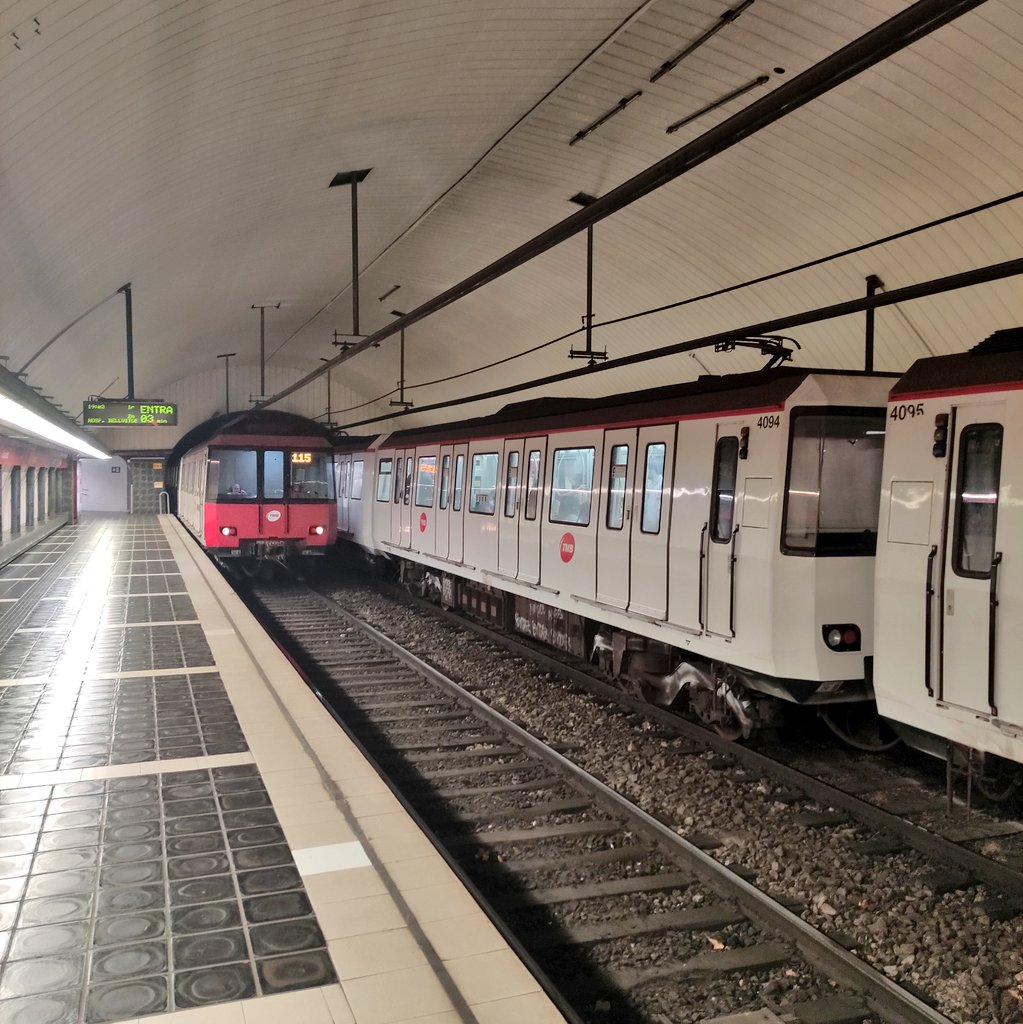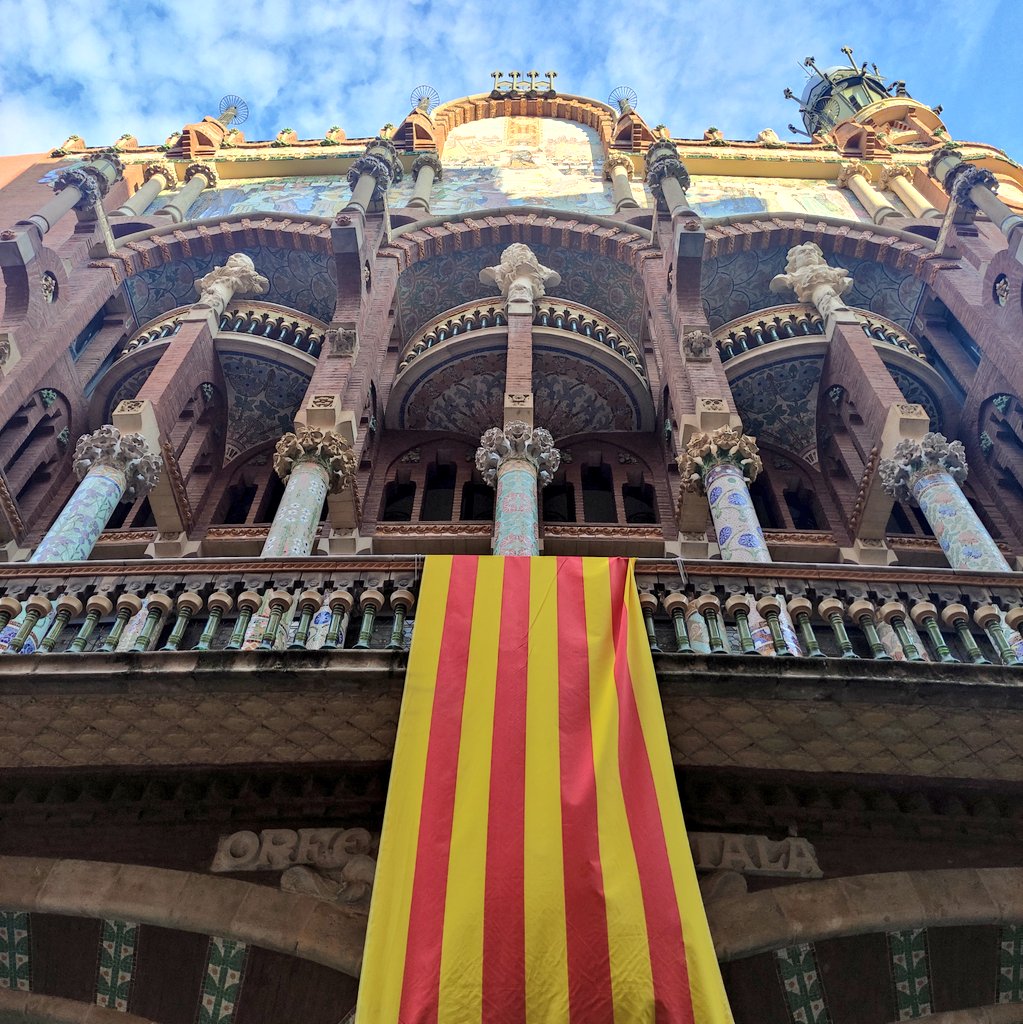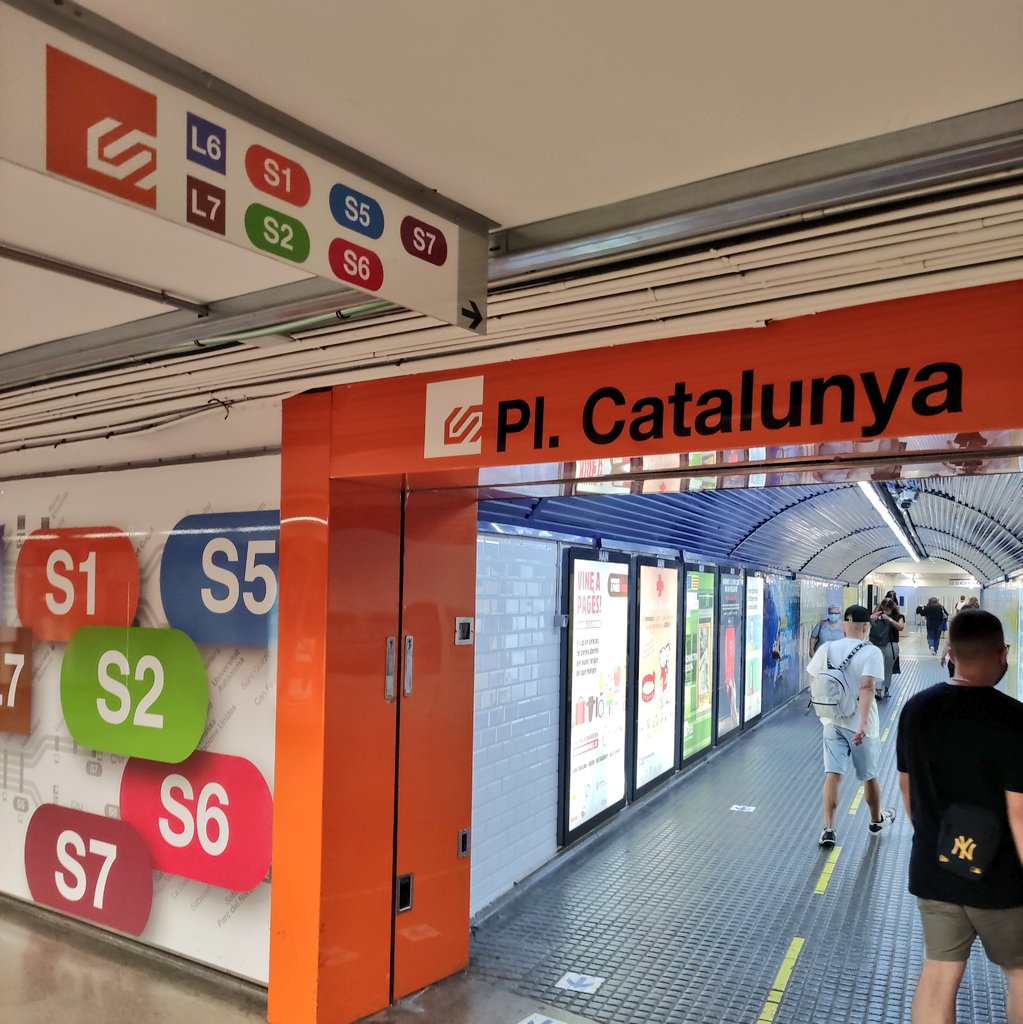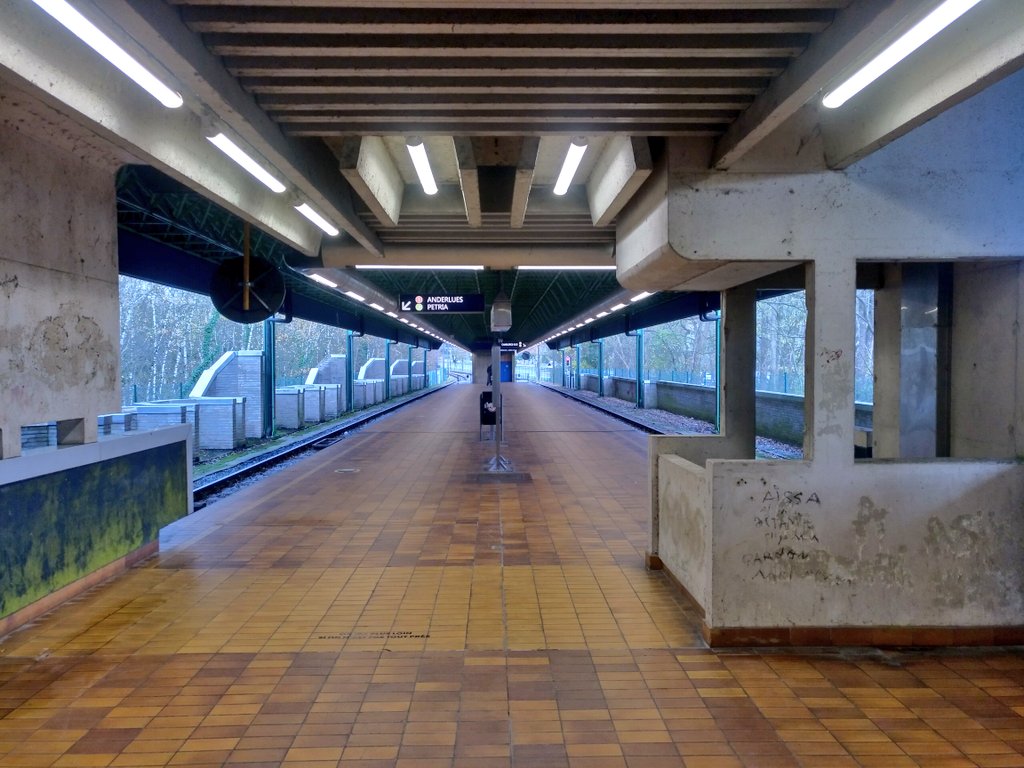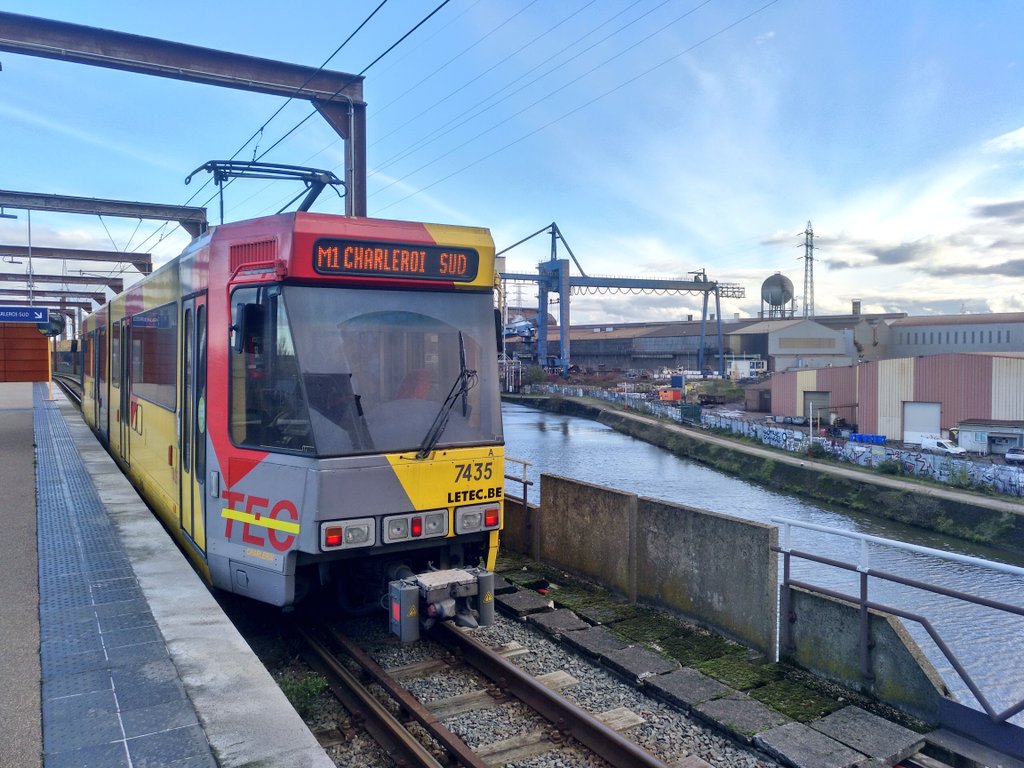Starting by the Metro. Line 1 opened in 1926 and, uniquely, it uses Iberian gauge tracks. There's even a connection to the adif/renfe network near Plaça Catalunya.
Trains are therefore rather wide and spacious.
I guess we could call this #BreitSpurUbahn

Trains are therefore rather wide and spacious.
I guess we could call this #BreitSpurUbahn


Some stations have a rather interesting Central European soviet-built metro look...
Others have old tiles at the edges of the tunnels like at the Paris metro...


Others have old tiles at the edges of the tunnels like at the Paris metro...



... and then some areas, particularly interchange corridors, are just plain ugly and not very appealing. 

Ticket are only checked when entering the metro. Many stations still feature old-school turnstiles that accept paper tickets (t-mobitat soon…)
Check the (very) old exit barriers that even have the little bins for "used tickets", when most people would travel on single tickets…

Check the (very) old exit barriers that even have the little bins for "used tickets", when most people would travel on single tickets…


Dos detalles de la señalética del Metro de Barcelona.
A la izquierda, el típico detalle sobre marcas que le mola a @gamusino. El Corte Inglés con su propio logotipo en el anden de la L1 de Plaça Catalunya.
A la derecha, un logo de @rodalies, un tanto desactualizado.

A la izquierda, el típico detalle sobre marcas que le mola a @gamusino. El Corte Inglés con su propio logotipo en el anden de la L1 de Plaça Catalunya.
A la derecha, un logo de @rodalies, un tanto desactualizado.

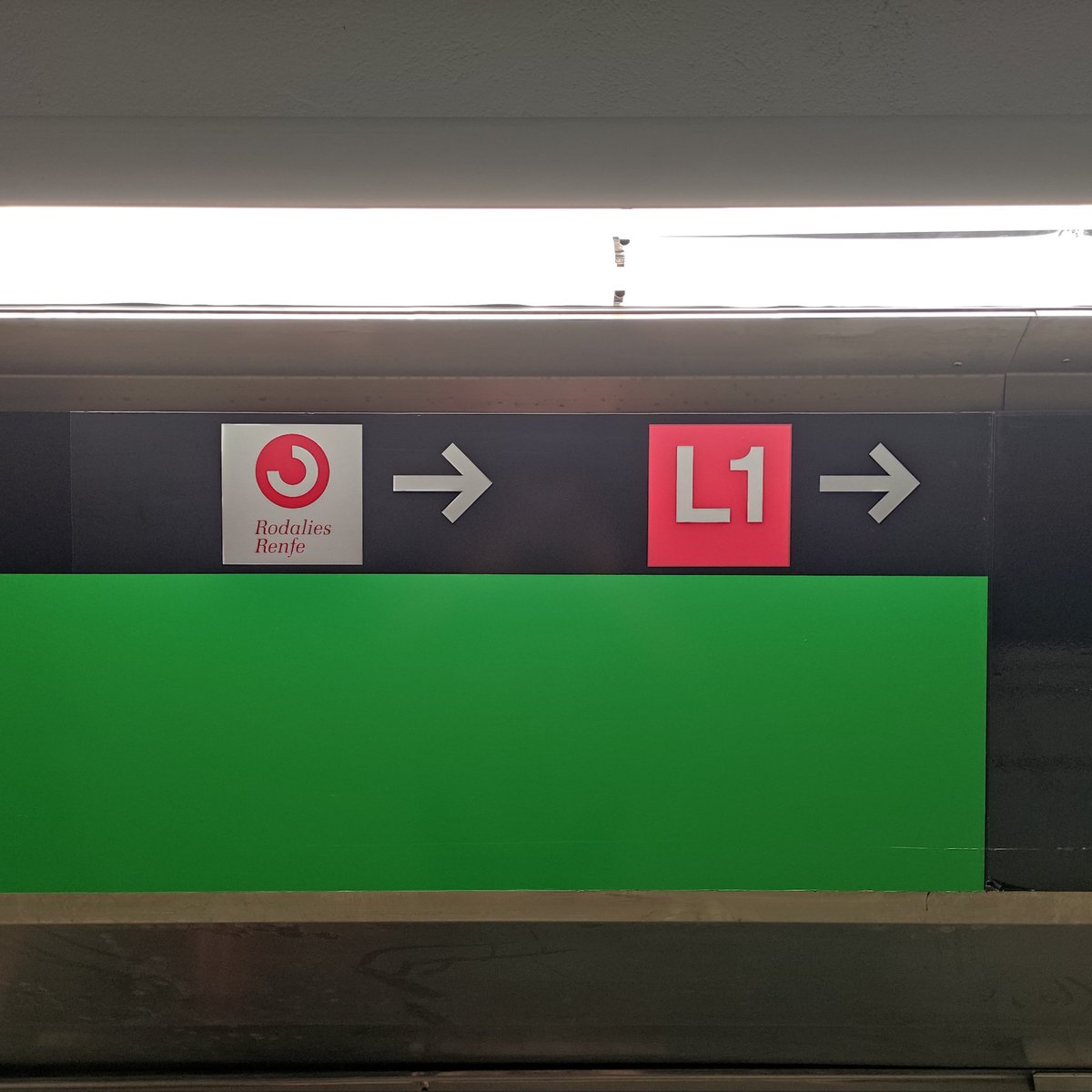
The city gets a little political on the 11th day of the 9th month. #Diada2021 






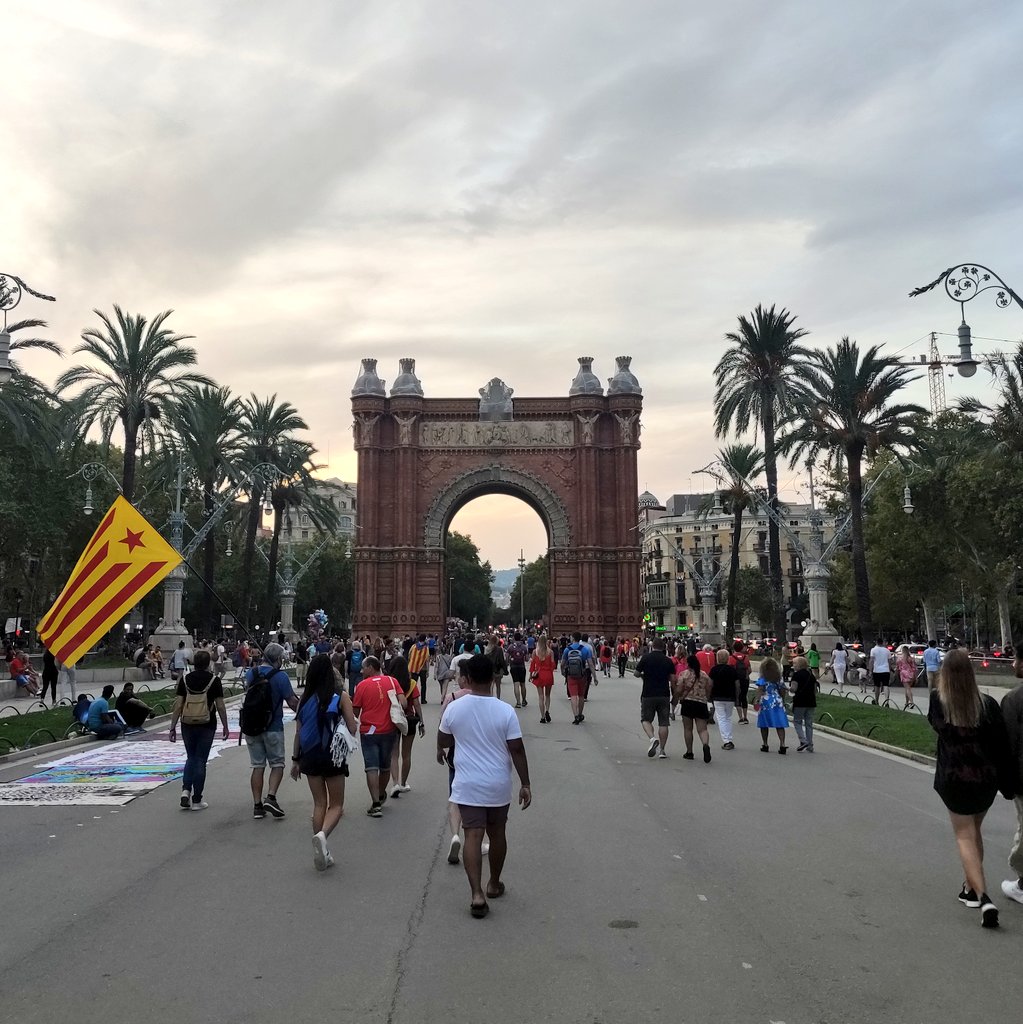
I had the chance and honour to visit the Palau de la Generalitat, seat of the Catalan government.
It's a stunning gothic palace dating back to the 14rh century.



It's a stunning gothic palace dating back to the 14rh century.




Ever since its construction, this building has always haused either the local authority, or the representation of the central authority.
They argue that it's one of the few buildings in the world that hold that record.



They argue that it's one of the few buildings in the world that hold that record.




Some final pics of the Palau.
An eclectic mix of architectural and artistic styles hidden in the middle of the Barri Gòtic of Barcelona.



An eclectic mix of architectural and artistic styles hidden in the middle of the Barri Gòtic of Barcelona.




We were also showed around the Barcelona city hall, located directly opposite the Palau.
For you to guess which councilor gave us the tour - hint on pic 4 😄



For you to guess which councilor gave us the tour - hint on pic 4 😄


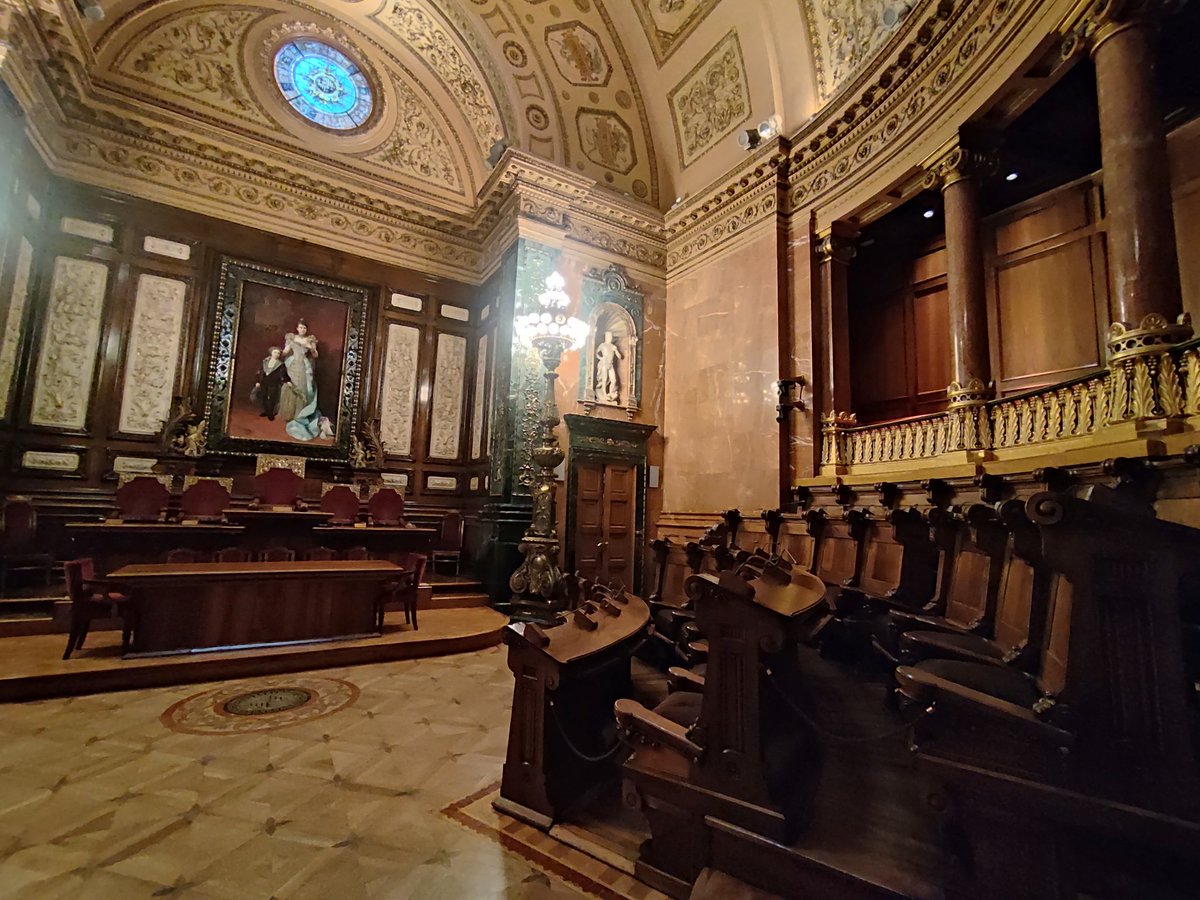

The views from the terrace of the "newest" building of the city hall are just impressive.
A 360 degree panorama of the city of Barcelona.



A 360 degree panorama of the city of Barcelona.




Can you see it? 🧐
A rather brutalist looking frontal by JM Subirachs at the city hall "Novíssim" building.
(Hint: look for letters 😉)
A rather brutalist looking frontal by JM Subirachs at the city hall "Novíssim" building.
(Hint: look for letters 😉)

Always in favour of retro bars.
Even more when it becomes a haven of localness, surrounded by places targeted to tourists.

Even more when it becomes a haven of localness, surrounded by places targeted to tourists.


Barcelona Estació de França - the proper train station of Barcelona.
The current building opened in 1929 and was for many decades the main railway terminus.
Being on a dead end, most of the rail traffic now happens at Sants.
The station restaurant looks absolutely wonderful.



The current building opened in 1929 and was for many decades the main railway terminus.
Being on a dead end, most of the rail traffic now happens at Sants.
The station restaurant looks absolutely wonderful.


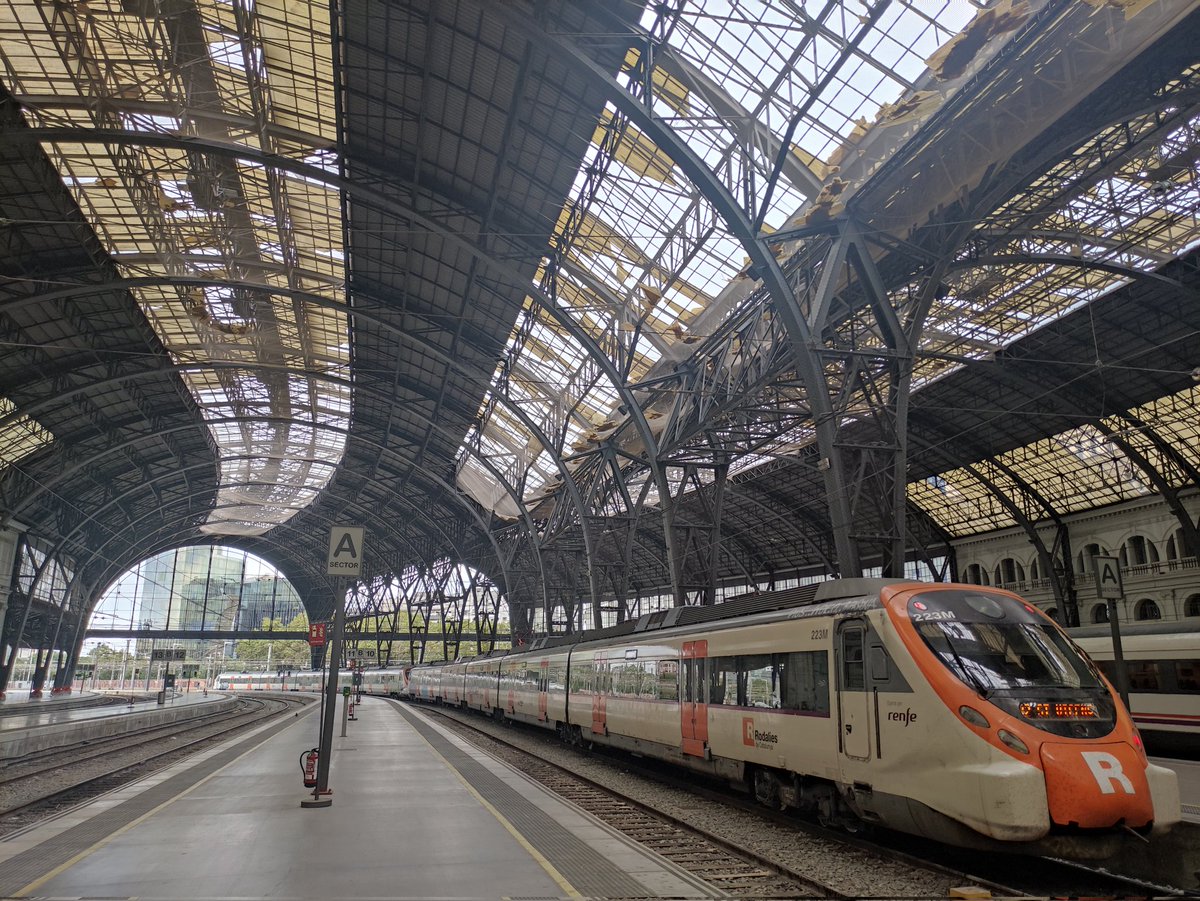

It now serves, sadly, pretty much as a backup station, with regional trains and few commuter trains terminating here, to avoid blocking tracks at Sants while turnaround, cleaning, etc. happens. 



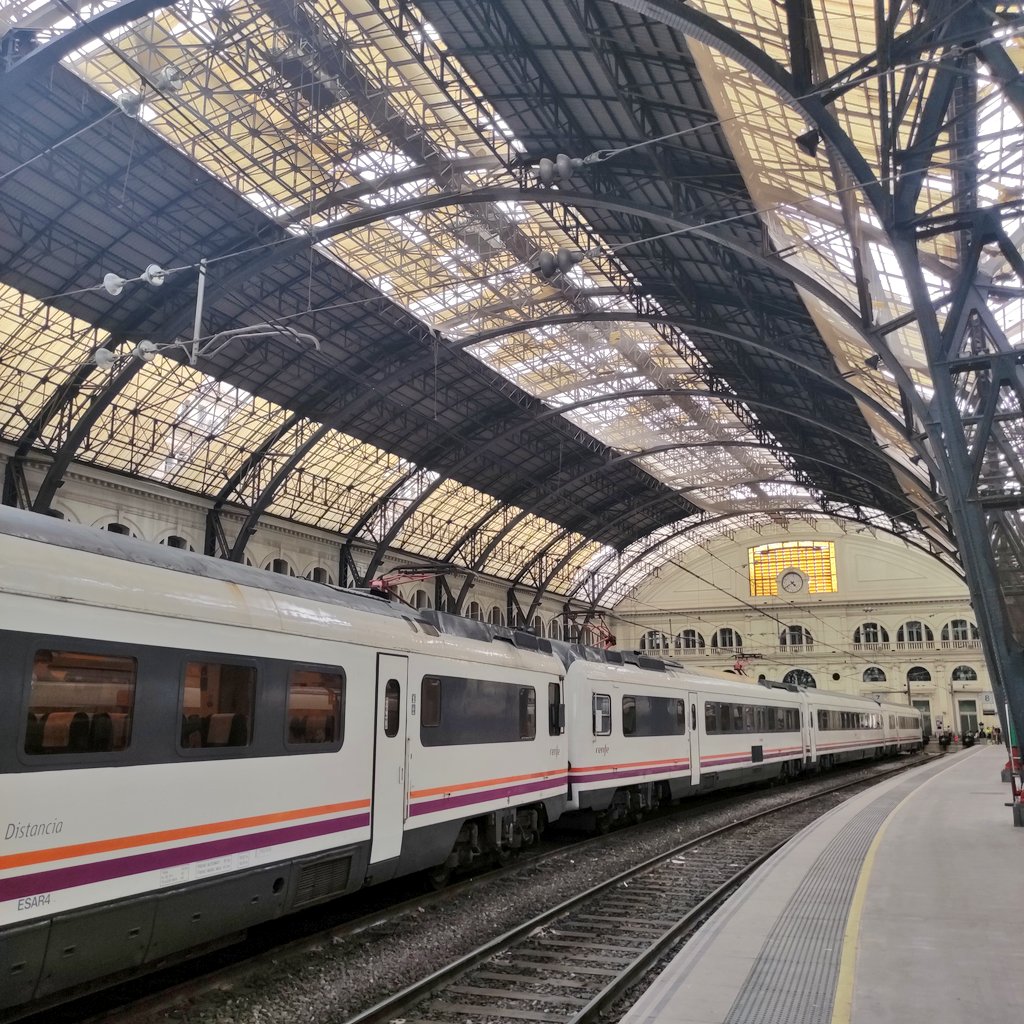



L'altra Barcelona
Getting off the metro at Carmel and it just feels soo far away from the tourist crowds at the centre.
With the cute little "Bus del Barri" we go up the very steep streets towards the hills of Carmel.



Getting off the metro at Carmel and it just feels soo far away from the tourist crowds at the centre.
With the cute little "Bus del Barri" we go up the very steep streets towards the hills of Carmel.




🌇 Watching the sunset from the Bunkers del Carmel is pretty epic.
The views of the city are probably the best you can get. With the flat Example, Gràcia, Ciutat Vella, etc. on one side… and the hilly Horta, Carmel, Nou Barris on the other side.
Absolutely beautiful.



The views of the city are probably the best you can get. With the flat Example, Gràcia, Ciutat Vella, etc. on one side… and the hilly Horta, Carmel, Nou Barris on the other side.
Absolutely beautiful.




We were not the only ones to think about going up the hill for the sunset…
[And I don't even want to imagine how this place was on a pre-covid summer...]


[And I don't even want to imagine how this place was on a pre-covid summer...]



Peu del Funicular, the lower station of the Vallvidrera funicular.
Opened in 1906 it was completely refurbished and converted into automatic operation in 1998.



Opened in 1906 it was completely refurbished and converted into automatic operation in 1998.




Vallvidrera Superior, the upper station of the Vallvidrera funicular.
There's a height difference of 158 meters between upper and lower stations, which allow for beautiful panoramic views of the city from above.



There's a height difference of 158 meters between upper and lower stations, which allow for beautiful panoramic views of the city from above.
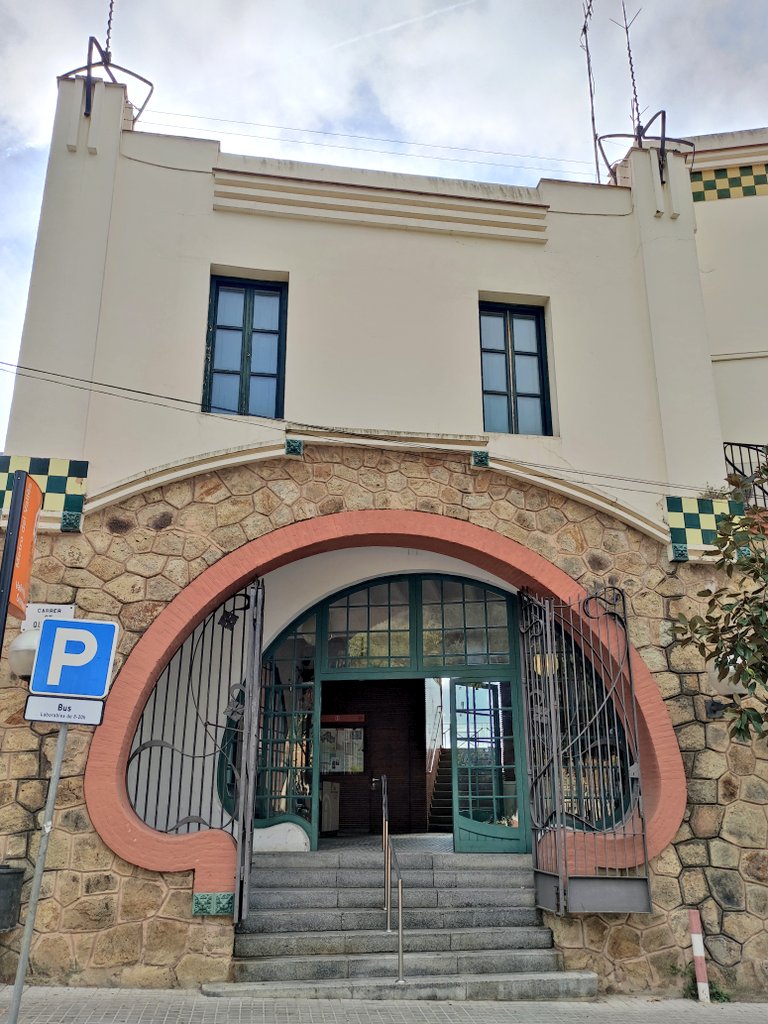



The Barcelona - Vallès line of the @FGC is the only line of the Iberian peninsula, other than metros and modern high speed lines, that uses standard European track gauge.
Originally it was planned to extend it north across the Pyrenees and connect it to the French network.

Originally it was planned to extend it north across the Pyrenees and connect it to the French network.


New L11 platforms at Trinitat Nova, on the day of their opening.
After a long summer closure, the L11 platfom was moved, to let the L4 have both sides of the big platfoms. L11 platfom now stands some meters further down the tunnel.



After a long summer closure, the L11 platfom was moved, to let the L4 have both sides of the big platfoms. L11 platfom now stands some meters further down the tunnel.




L11 is quite strange for BCN metro standards, since it's more of a shuttle than a metro line
It is operated only by 2 trains that cross at the middle station. The rest of the line is on single track tunnel
The line is also operated on automatic mode, even if a driver is present



It is operated only by 2 trains that cross at the middle station. The rest of the line is on single track tunnel
The line is also operated on automatic mode, even if a driver is present

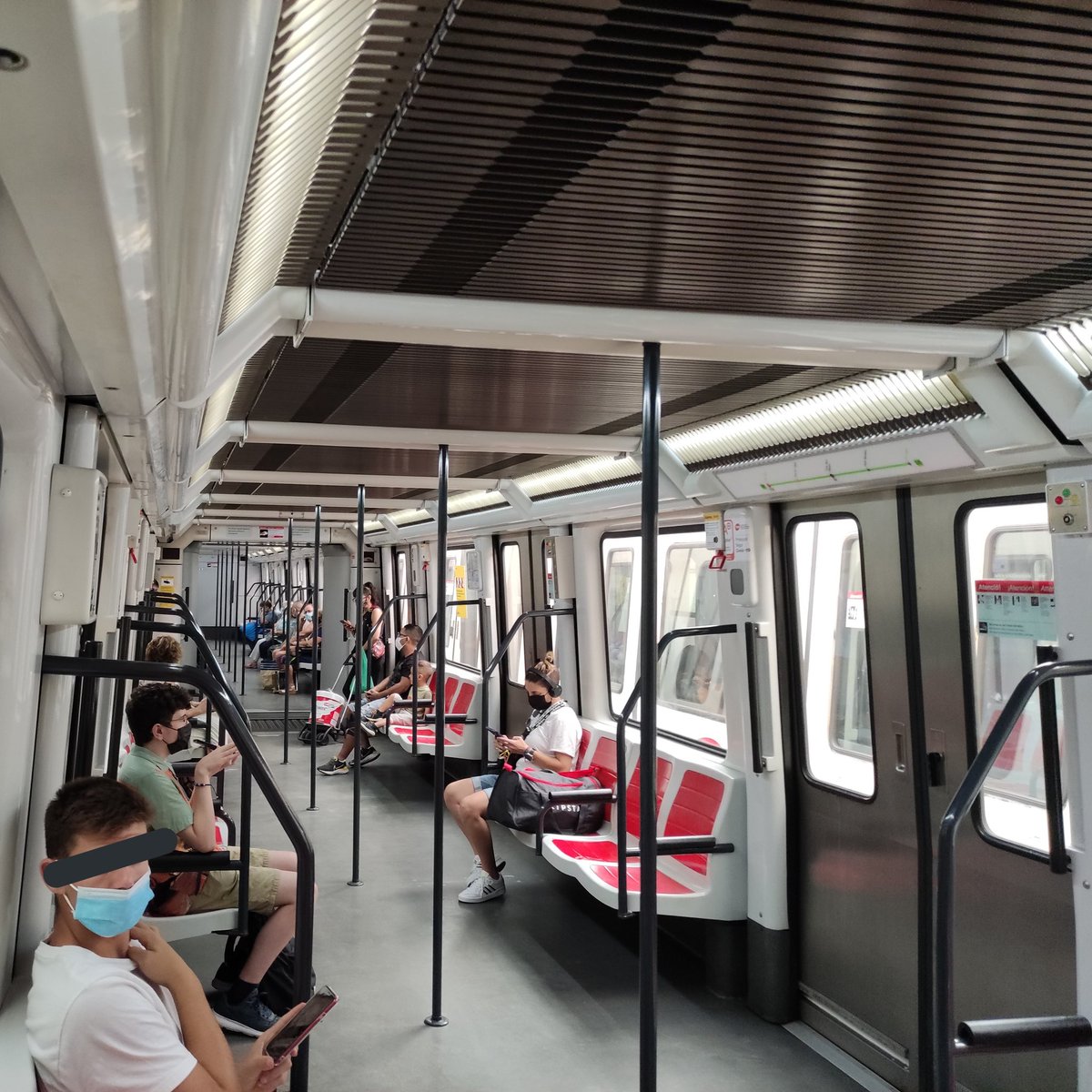


And the thread comes to an end where it started, at Plaça Catalunya, but on the opposite platform.
A station where both metro and commuters train run on Iberian gauge tracks.
A station where both metro and commuters train run on Iberian gauge tracks.

P.S. If you visit Barcelona make sure to ask a friend to get you out of the centre, and bring you to a local bar on a proper neighbourhood. The real Barcelona.
Gràcies Max!
Gràcies Max!

[And if you ended up here at the end of this "short" 😅 thread, you're probably also interested on how we traveled from Barcelona to Brussels by night train via the Pyrenees]
https://twitter.com/fuenareva/status/1437889159230787588?s=19
• • •
Missing some Tweet in this thread? You can try to
force a refresh

